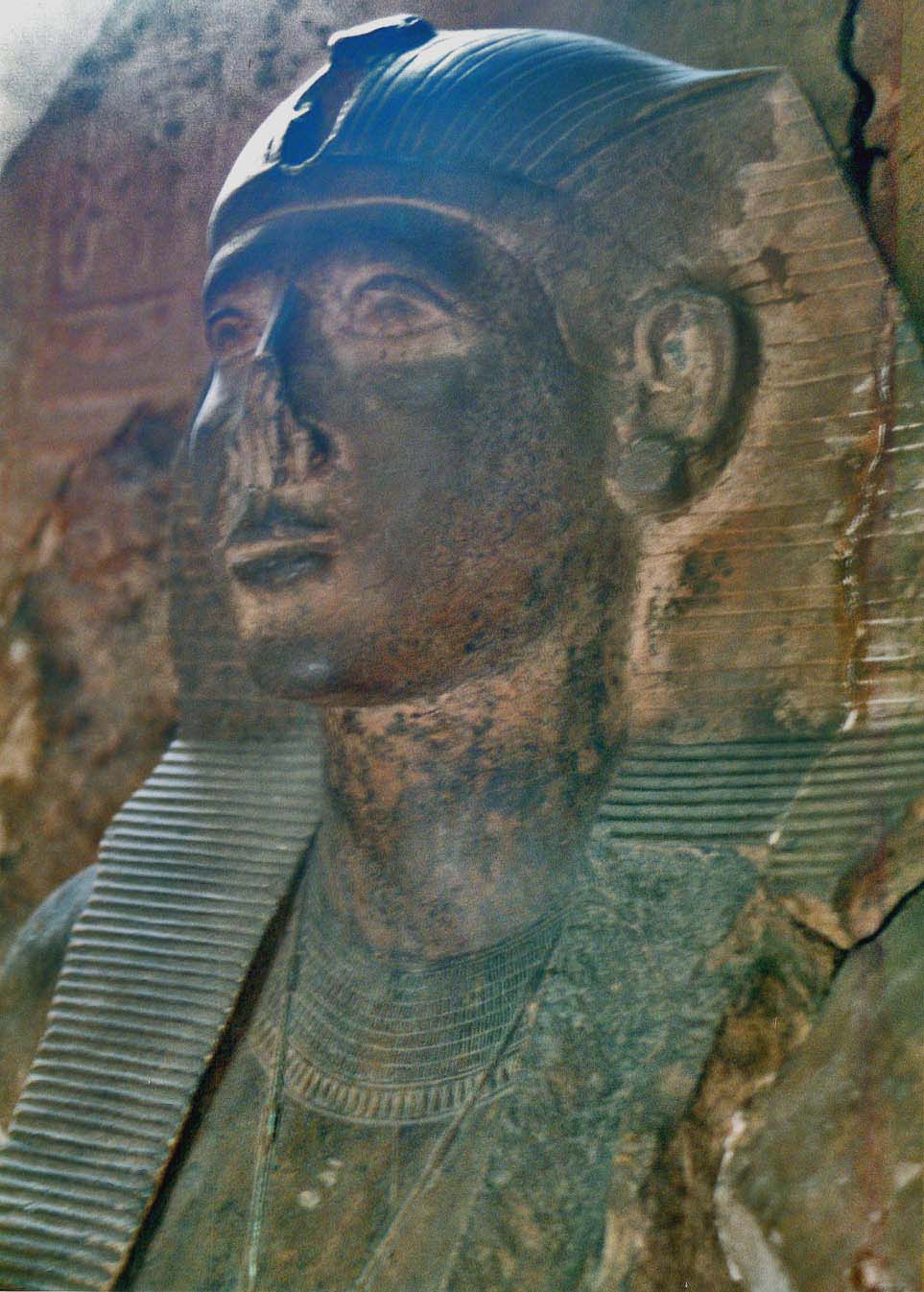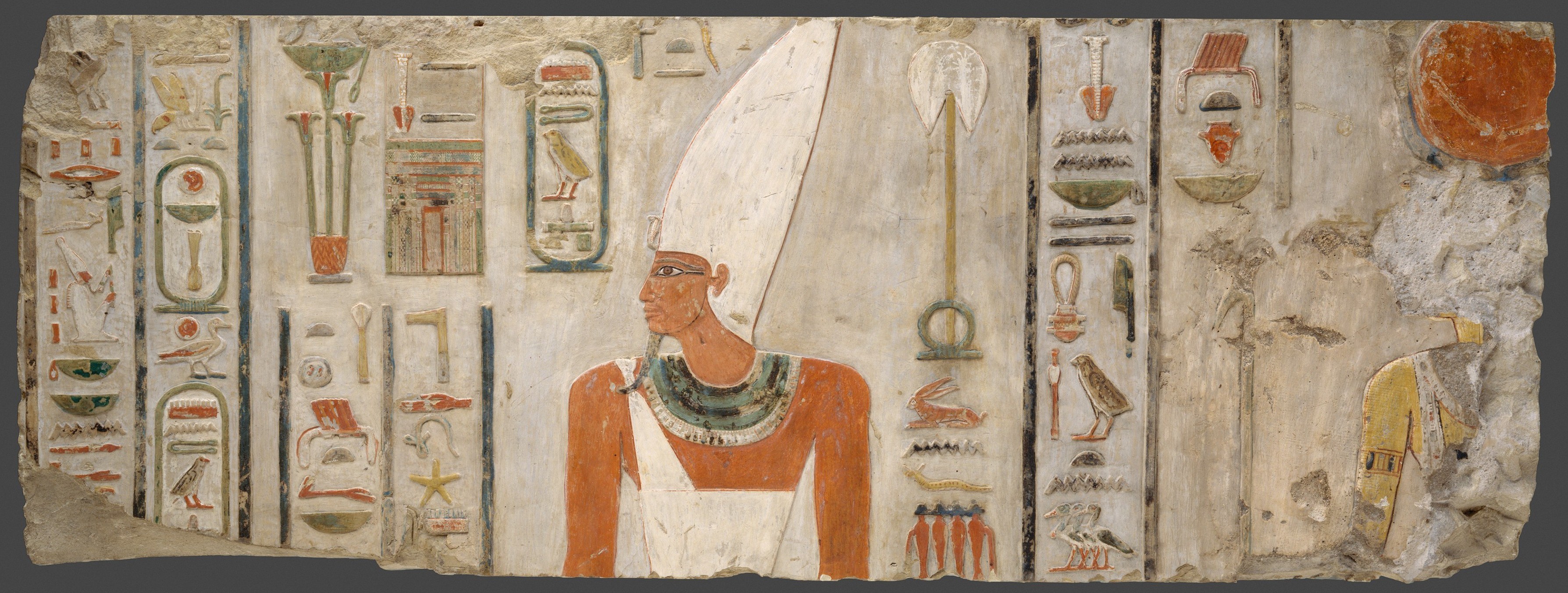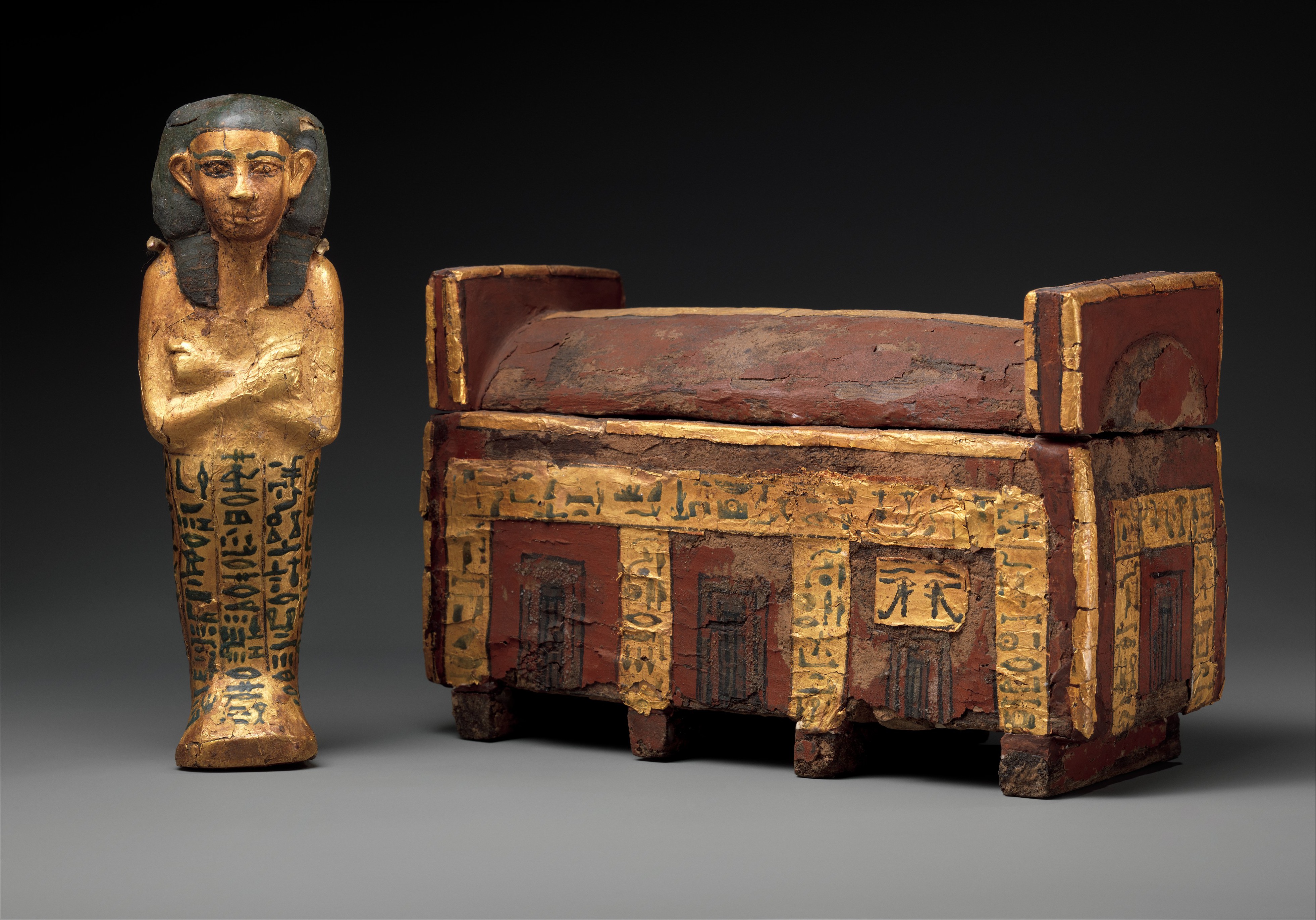|
Neferhotep
Khasekhemre Neferhotep I was an Egyptian pharaoh of the mid Thirteenth Dynasty ruling in the second half of the 18th century BC Ryholt, K.S.B: The Political Situation in Egypt During the Second Intermediate Period, c.1800–1550 BC', Carsten Niebuhr Institute Publications, 20. Copenhagen: Museum Tusculanum Press, (1997). . . . during a time referred to as the late Middle Kingdom or early Second Intermediate Period, depending on the scholar. One of the best attested rulers of the 13th Dynasty, Neferhotep I reigned for 11 years according to the Turin King List. The grandson of a non-royal townsman from a Theban family with a military background, Neferhotep I's relation to his predecessor Sobekhotep III is unclear and he may have usurped the throne. Neferhotep I was likely contemporaneous with kings Zimri-Lim of Mari and Hammurabi of Babylon. Little is known of his activities during his decade-long reign and the most important document surviving from his rule is a stela from Ab ... [...More Info...] [...Related Items...] OR: [Wikipedia] [Google] [Baidu] |
Neferhotep I
Khasekhemre Neferhotep I was an Ancient Egypt, Egyptian pharaoh of the mid Thirteenth dynasty of Egypt, Thirteenth Dynasty ruling in the second half of the 18th century BCKim Ryholt, Ryholt, K.S.B: The Political Situation in Egypt During the Second Intermediate Period, c.1800–1550 BC', Carsten Niebuhr Institute Publications, 20. Copenhagen: Museum Tusculanum Press, (1997). . . . during a time referred to as the late Middle Kingdom of Egypt, Middle Kingdom or early Second Intermediate Period, depending on the scholar. One of the best attested rulers of the 13th Dynasty, Neferhotep I reigned for 11 years according to the Turin King List. The grandson of a non-royal townsman from a Thebes, Egypt, Theban family with a military background, Neferhotep I's relation to his predecessor Sobekhotep III is unclear and he may have usurped the throne. Neferhotep I was likely contemporaneous with kings Zimri-Lim of Mari, Syria, Mari and Hammurabi of Babylon. Little is known of his activities ... [...More Info...] [...Related Items...] OR: [Wikipedia] [Google] [Baidu] |
Sihathor
Menwadjre Sihathor was an ephemeral ruler of the late 13th Dynasty during the Middle Kingdom. Sihathor may never have enjoyed an independent reign, possibly only ruling for a few months as a coregent with his brother Neferhotep I. According to Egyptologist Kim Ryholt, Sihathor died in 1733 BC while Detlef Franke dates his short reign to 1694 BC. His tomb is likely to be the unfinished one located between the tombs of his brothers S9 and S10, in Abydos. __TOC__ Attestations According to the latest reading of the Turin canon by Ryholt, Sihathor is recorded there on column 7, line 26 (Gardiner col. 6, line 26).K.S.B. Ryholt, The Political Situation in Egypt during the Second Intermediate Period, c.1800–1550 BC, Carsten Niebuhr Institute Publications, vol. 20. Copenhagen: Museum Tusculanum Press, 1997excerpts available online here/ref> Sihathor is attested on two statues from the Hekaib sanctuary in Elephantine as a "king's son", which is here an honorary title referring to ... [...More Info...] [...Related Items...] OR: [Wikipedia] [Google] [Baidu] |
Sobekhotep IV
Khaneferre Sobekhotep IV was one of the more powerful Egyptian kings of the 13th Dynasty (c. 1803 BC to c. 1649 BC), who reigned at least eight years. His brothers, Neferhotep I and Sihathor, were his predecessors on the throne, the latter having only ruled as coregent for a few months. Sobekhotep states on a stela found in the Amun temple at Karnak that he was born in Thebes. The king is believed to have reigned for around 10 years. He is known by a relatively high number of monuments, including stelae, statues, many seals and other minor objects. There are attestations for building works at Abydos and Karnak. Family Parentage and Siblings Sobekhotep was the son of the 'god's father' Haankhef and of the 'king's mother' Kemi. His paternal grandparents were ''soldier of the town's regiment'' Nehy and his wife Senebtysy. We know nothing about his maternal grandparents. Khaneferre Sobekhotep was the youngest brother of Khasekhemre Neferhotep and Sihathor. He succeeded ... [...More Info...] [...Related Items...] OR: [Wikipedia] [Google] [Baidu] |
Thirteenth Dynasty Of Egypt
The Thirteenth Dynasty of ancient Egypt (notated Dynasty XIII) was a series of rulers from approximately 1803 BC until approximately 1649 BC, i.e. for 154 years. It is often classified as the final dynasty of the Middle Kingdom (which includes Dynasties XI, XII and XIV), but some historians instead group it in the Second Intermediate Period (with Dynasties XIV through XVII). Dynasty XIII initially ruled from the Nile Delta to the second cataract of the Nile. However, the dynasty marked a period of decline and instability, with Dynasty XIV rising concurrently and the Hyksos Dynasty XV taking control shortly after. Sekhemre Khutawy Sobekhotep is usually considered Dynasty XIII's first pharaoh, and Merneferre Ay, while not the final pharaoh, was the last to occupy the Middle Kingdom capital of Itjtawy, and the last of the dynasty with a significant recorded reign. Chronology and rulers Ryholt (1997:190) argues that the 13th Dynasty lasted from 1803-1649 BC, lasting some ... [...More Info...] [...Related Items...] OR: [Wikipedia] [Google] [Baidu] |
S 9 (Abydos)
S 9 (also Abydos-south S9) is the modern name given to a monumental ancient Egyptian tomb complex at Abydos, Egypt, Abydos in Egypt. The tomb is most likely royal and dates to the mid-Thirteenth dynasty of Egypt, 13th Dynasty, during the late Middle Kingdom of Egypt, Middle Kingdom. Finds from the area of the tomb indicate that S9 suffered extensive, state-sanctioned stone and grave robbing during the Second Intermediate Period, only a few decades after its construction, as well as during the later Egypt (Roman province), Roman and Coptic periods. Although no direct evidence was found to determine the tomb owner, strong indirect evidence suggest that the neighbouring and slightly smaller tomb S 10 (Abydos), S10 belongs to pharaoh Sobekhotep IV (fl. c. 1725 BC). Consequently, S9 has been tentatively attributed by the Egyptologist Josef W. Wegner to Sobekhotep IV's predecessor and brother, Neferhotep I (fl. c. 1735 BC). According to Wegner, the tomb might originally have been capped b ... [...More Info...] [...Related Items...] OR: [Wikipedia] [Google] [Baidu] |
Haankhef
Haankhef was the father of the ancient Egyptian kings Neferhotep I, Sihathor, and Sobekhotep IV, who successively ruled Egypt during the second half of the 18th century BC as kings of the 13th Dynasty. Biography Haankhef is known from a number of monuments all of which are connected to his royal sons. On his monuments Haankhef bears the titles "''Royal Sealer''" and "''God's Father''". Both titles were given to him after his sons became kings and it is consequently unknown what position he held before these events. "God's father" is a title often given to the non-royal parents of a king and Haankhef's father Nehy is indeed known to have been a simple "''officer of the town regiment''" in Thebes. Similarly Haankhef's mother Senebtysy only held the common title of "''Lady of the House''". This indicates that Haankhef belonged to a rather middle level family of military officials. What role this background played in the accession of Neferhotep I to the throne is unknown. Haankhef is ... [...More Info...] [...Related Items...] OR: [Wikipedia] [Google] [Baidu] |
Sobekhotep III
Sekhemre Sewadjtawy Sobekhotep III was an Egyptian king of the mid Thirteenth Dynasty of Egypt who reigned three to four years. Family Parents and siblings The family of the king is known from several sources. A monument from Sehel Island shows Sobekhotep with his father Mentuhotep, his mother was king's mother Iuhetibu (Yauheyebu), his brothers Seneb and Khakau, and a half-sister called Reniseneb. Reniseneb was a daughter of Iuhetibu and her second husband Dedusobek.M. F. Laming Macadam, A Royal Family of the Thirteenth Dynasty, The Journal of Egyptian Archaeology, Vol. 37 (Dec., 1951), pp. 20-28 Wife and children Sobekhotep III had two wives, Senebhenas and Neni. A stela from Koptos (Qift),Dodson, Aidan and Hilton, Dyan. The Complete Royal Families of Ancient Egypt. Thames & Hudson. 2004. now in the Louvre (C 8), mentions the daughters of Neni: Iuhetibu Fendy and Dedetanqet. Iuhetibu Fendy wrote her name in a cartouche. This is the second time in Egyptian history th ... [...More Info...] [...Related Items...] OR: [Wikipedia] [Google] [Baidu] |
Middle Kingdom Of Egypt
The Middle Kingdom of Egypt (also known as The Period of Reunification) is the period in the history of ancient Egypt following a period of political division known as the First Intermediate Period of Egypt, First Intermediate Period. The Middle Kingdom lasted from approximately 2040 to 1782 BC, stretching from the reunification of Egypt under the reign of Mentuhotep II in the Eleventh Dynasty of Egypt, Eleventh Dynasty to the end of the Twelfth Dynasty of Egypt, Twelfth Dynasty. The kings of the Eleventh Dynasty ruled from Thebes, Egypt, Thebes and the kings of the Twelfth Dynasty ruled from Lisht, el-Lisht. The Periodization of ancient Egypt, concept of the Middle Kingdom as one of three golden ages was coined in 1845 by German Egyptologist Christian Charles Josias von Bunsen, Baron von Bunsen, and its definition evolved significantly throughout the 19th and 20th centuries. Some scholars also include the Thirteenth Dynasty of Egypt wholly into this period, in which case the Mi ... [...More Info...] [...Related Items...] OR: [Wikipedia] [Google] [Baidu] |
Senebsen
Senebsen was an Ancient Egyptian queen and wife of king Neferhotep I during the 13th Dynasty. Attestations She is mentioned in a rock inscription on the Sehel Island where members of the king's family are listed (but not the king himself). Otherwise she is mentioned on a scarab and in a tomb at Elkab, where there is also mentioned her daughter Neferhotep. Seal Berlin ÄM 32630 A steatite scarab seal of a servant of Senebsen. Her titles are title King's Wife and United with the White Crown. Rock Inscription SEH 162 With the title King's Wife. She is mentioned after the parents of Neferhotep I, before his brothers and children. The monument also named King's Acquaintance Nebankh Nebankh was an ancient Egyptian official of the Thirteenth Dynasty. He is one of the better known personalities of this period. Family Nebankh was the son of the ''steward'' Sobekhotep. His mother is named Hapyu. His brother Dedusobek Bebi wa ... (PD 294) and Treasurer Senebi (PD 634). Tomb El ... [...More Info...] [...Related Items...] OR: [Wikipedia] [Google] [Baidu] |
Wahneferhotep
Wahneferhotep was an ancient Egyptian ''king's son'' who lived in the Thirteenth Dynasty, around 1700 BC. Attestation Wahneferhotep is only known from a shabti and model coffin found in the mortuary temple of the pyramid of Senusret I at Lisht, and now at the Metropolitan Museum of Art. On both objects he bears the title ''king's son''. His name means ''Neferhotep endures''. Theories Neferhotep might refer to king Neferhotep I, who was one of the most powerful rulers of the Thirteenth Dynasty; some scholars argue that this king is the most likely ruler that is mentioned in the name. However, the pottery found near the model coffins points to a later date, making it more likely that ''Neferhotep'' refers to another, later, king with the same name.Dieter Arnold: ''The Pyramid of Senwosret I, South Cemeteries of Lisht I'', New York 1988, , pp. 37-40 References [...More Info...] [...Related Items...] OR: [Wikipedia] [Google] [Baidu] |







